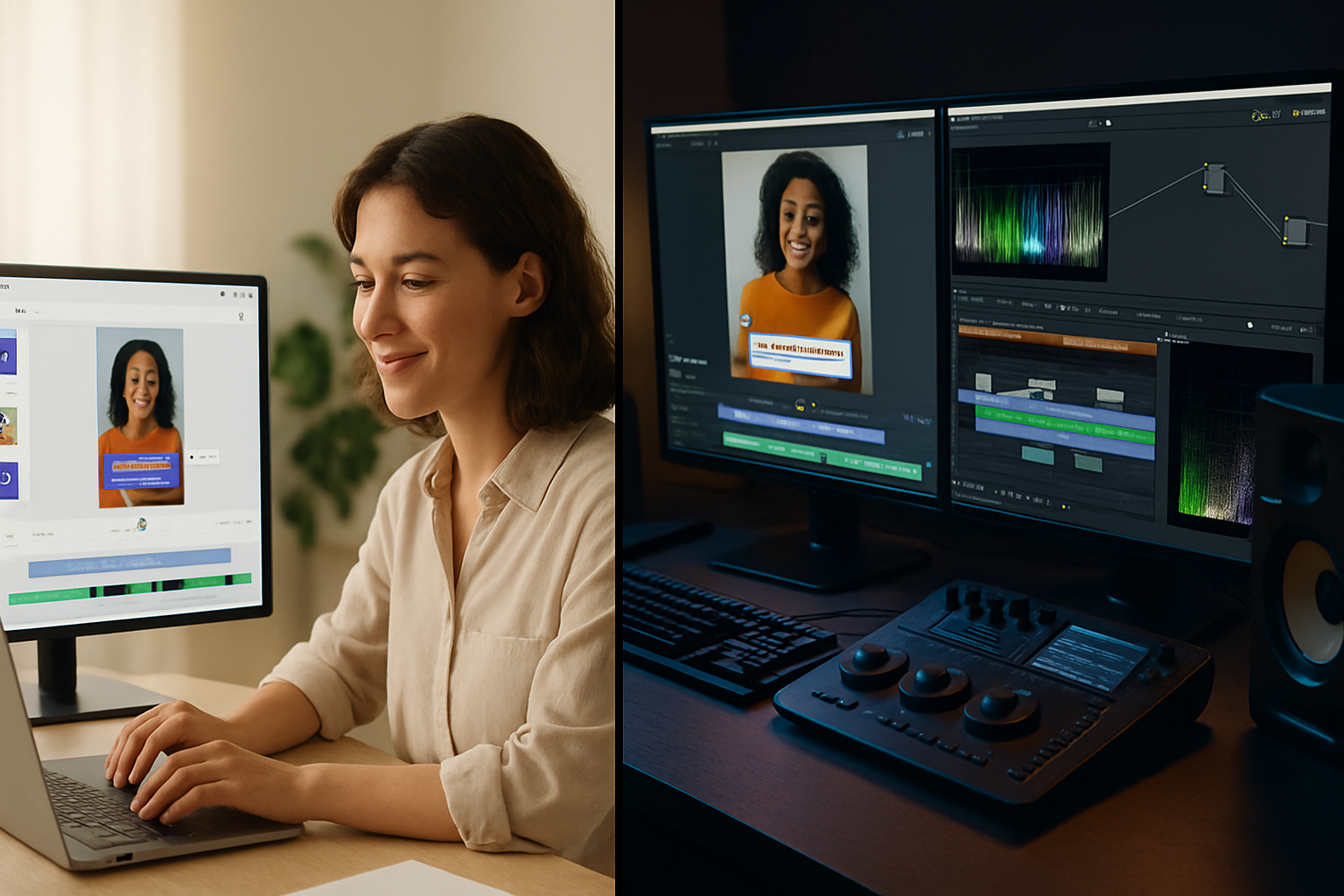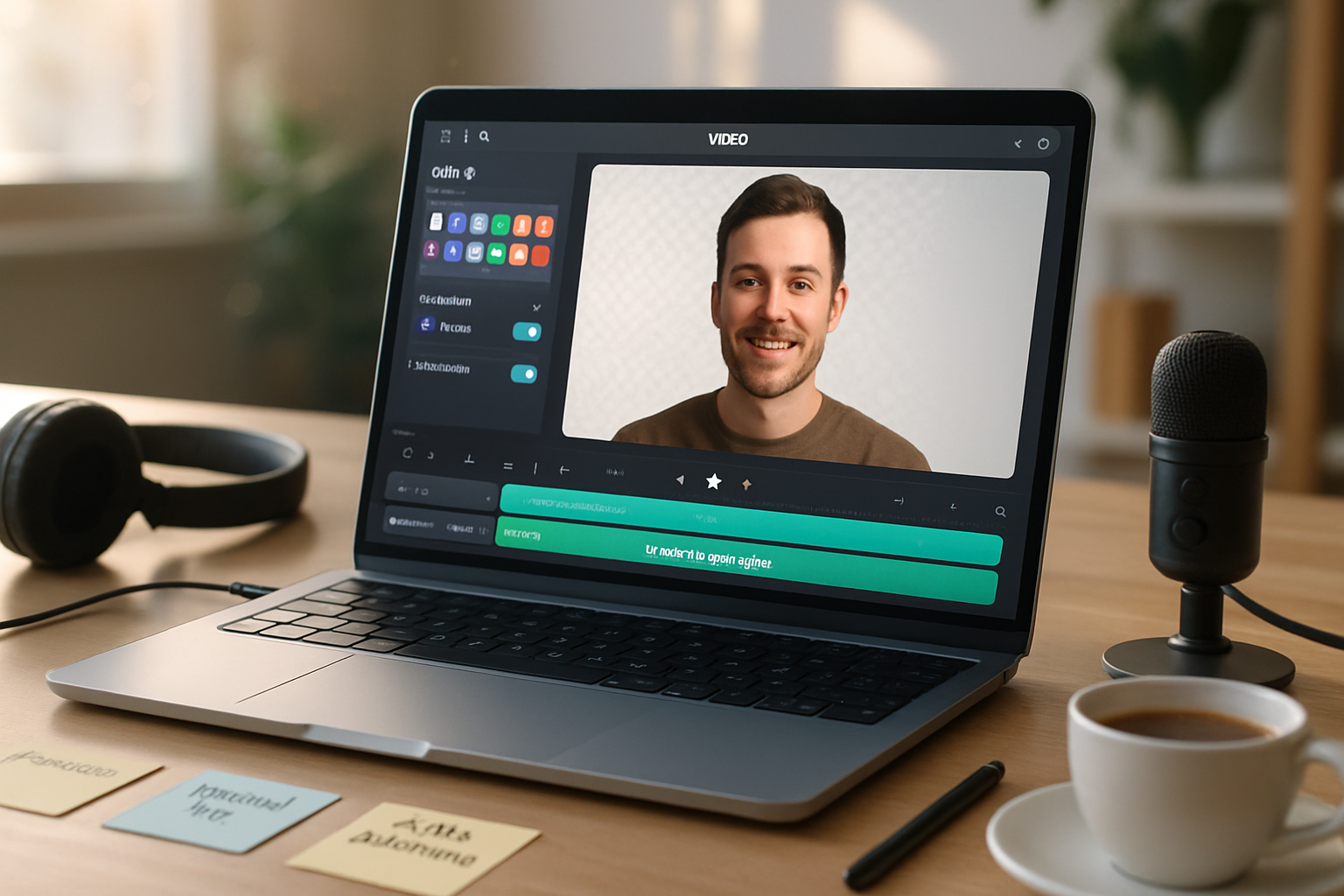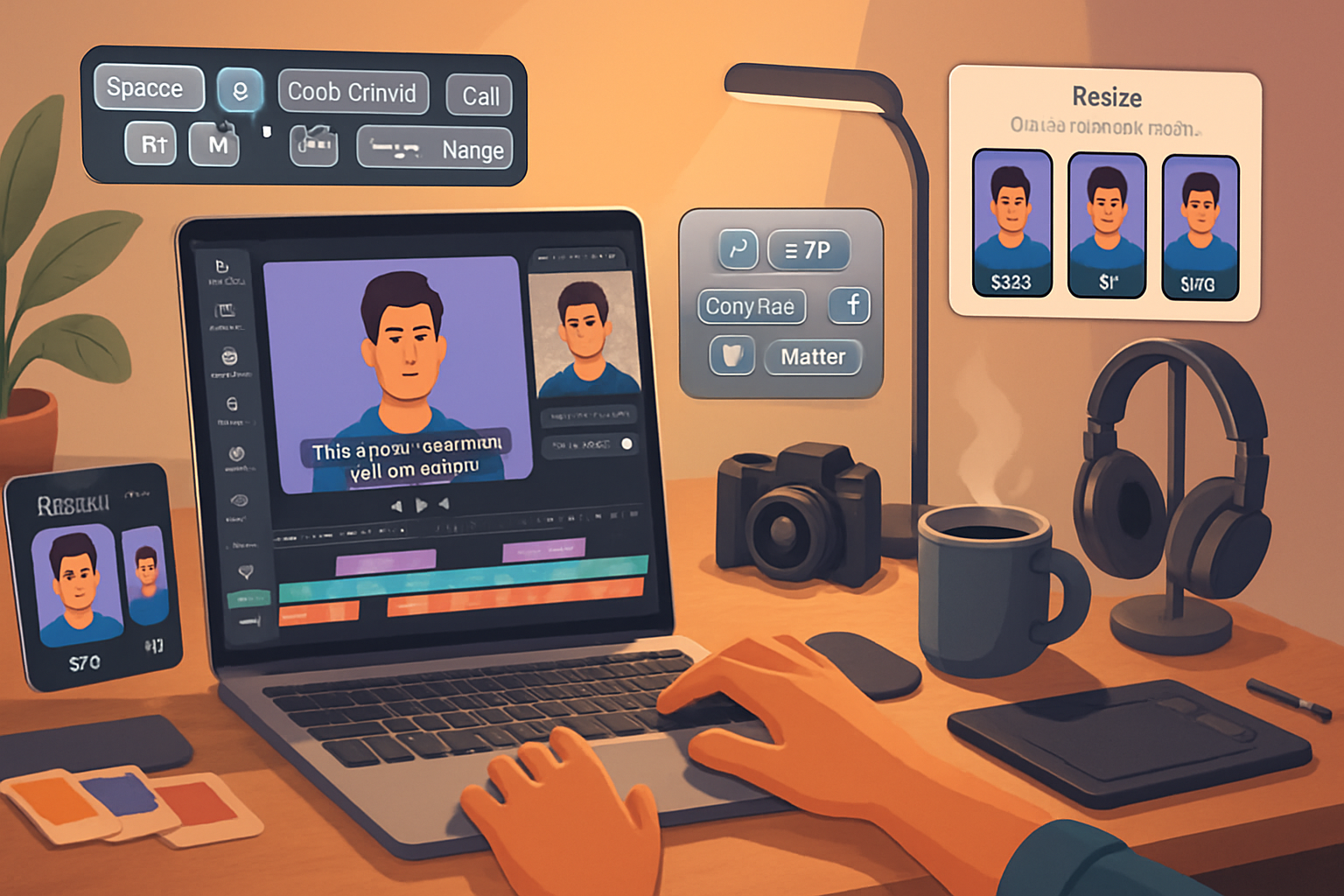· creativity · 7 min read
Veed.io vs. Traditional Video Editing Software: Is It Time to Make the Switch?
A practical, side-by-side comparison of Veed.io and traditional non-linear editors (Premiere Pro, Final Cut, DaVinci Resolve) to help freelancers and small businesses choose the right tool for their workflows, budgets, and growth plans.

What you’ll be able to decide after reading this
You’ll walk away knowing which tool will actually save you time, reduce client friction, and lower costs: a fast, cloud-first editor like Veed.io, or a full-featured traditional NLE (Premiere Pro, Final Cut Pro, DaVinci Resolve). Clear recommendations. Practical trade-offs. No marketing fluff.
The short answer - outcome first
If you make short-form social, client promos, captions, or collaborative content and need speed with minimal setup, Veed.io will likely speed up your day and your billing. If you create long-form narratives, heavy color work, complex audio mixes, or need absolute file control and offline editing, stick with a traditional NLE.
Read on for the detailed comparison and a practical checklist so you can decide for your exact situation.
Quick orientation: what is Veed.io vs. a traditional NLE?
Veed.io - a cloud-based, web-first video editor with templates, AI-driven features (auto-subtitles, translations, auto-captions), collaborative comments, and export profiles optimized for social platforms. It runs in the browser and stores projects in the cloud.
Traditional NLEs - apps like Adobe Premiere Pro (subscription), Final Cut Pro (one-time purchase on Mac), and DaVinci Resolve (free & Studio paid). They run locally, offer deep control over color grading, audio mixing, advanced effects, and accept complex codec workflows.
Sources: Veed pricing and product pages and major NLE product pages provide feature summaries: Veed.io Pricing, Adobe Premiere Pro, DaVinci Resolve, Final Cut Pro.
Head-to-head: strengths and weaknesses
Speed & setup
- Veed.io - Zero-install. Start in minutes from any device with a browser. Fast templates and presets for reels, captions, and thumbnails. Great when deadlines are tight.
- Traditional NLE - Requires install, asset management, and potentially hardware/driver updates. Setup takes longer but pays off for complex projects.
Verdict: Veed wins for speed; NLEs win for depth.
Collaboration & client review
- Veed.io - Real-time collaboration, browser-based comments, link-based review and approvals. No need to export review builds constantly.
- Traditional NLE - Collaboration exists (Team Projects, Frame.io integrations), but often requires extra services, uploads, and heavier file management.
Verdict: Veed wins for lightweight, immediate collaboration.
Feature depth (editing, effects, transitions)
- Veed.io - Excellent for trimming, simple transitions, text overlays, auto-subtitles, branded templates. Limited track complexity, limited professional VFX or node-based compositing.
- Traditional NLE - Full-featured timeline, nested sequences, keyframing accuracy, advanced masking, motion tracking, GPU-accelerated effects, and comprehensive third-party plugins.
Verdict: NLEs win for advanced creative control.
Color grading and visual fidelity
- Veed.io - Basic color controls and LUT application in many cases, fine for social and marketing content.
- Traditional NLE - Industry-grade color tools (DaVinci Resolve is a color standard), high-bit-depth workflows, ACES, professional scopes.
Verdict: NLEs are essential for broadcast-grade color.
Audio mixing and sound design
- Veed.io - Basic audio levels, noise reduction and AI-driven cleanup tools in some tiers. Good for dialog-centric social videos.
- Traditional NLE - Multitrack mixing, buses, sidechaining, advanced noise reduction, integration with Pro Tools or Fairlight for complex mixes.
Verdict: NLEs for pro audio; Veed is sufficient for simple projects.
File formats, codecs, and export control
- Veed.io - Exports common formats optimized for platforms; limited control over advanced codec settings and multi-bitrate workflows.
- Traditional NLE - Deep control (bitrate ladders, codecs like ProRes, DNxHR, custom export chains), IMFs for broadcast, and hardware acceleration.
Verdict: NLEs for professional delivery requirements.
Offline access and reliability
- Veed.io - Requires internet. Performance depends on upload/download speeds and browser stability.
- Traditional NLE - Works offline and leverages local hardware; ideal for big RAW files and large media farms.
Verdict: NLEs for offline reliability.
Cost & scaling
- Veed.io - Free tier; subscription tiers scale by feature set and team seats. Predictable monthly costs; lower initial investment.
- Traditional NLE - Varies - Adobe is subscription-based (Creative Cloud), Final Cut one-time, DaVinci has a feature-rich free tier and a paid Studio license. Additional costs: plugins, storage, powerful hardware.
Verdict: Veed offers lower entry cost; total cost depends on headcount, hardware, and plugins for NLEs.
Learning curve
- Veed.io - Intuitive. Minimal training for team members or clients.
- Traditional NLE - Steeper learning curve but more transferable across large-scale production workflows.
Verdict: Veed for fast adoption; NLE for long-term craft investment.
Security & privacy
- Veed.io - Cloud storage and processing - requires trust in vendor’s security practices and compliance. Good providers publish security docs; check for encryption, team admin controls, and region rules.
- Traditional NLE - Local control over assets and backups. Better for sensitive projects where file residency and chain-of-custody matter.
Verdict: NLE for sensitive workflows; Veed acceptable for marketing and non-sensitive content where vendor trust is established.
Who should choose Veed.io? (Use cases and examples)
Choose Veed.io if you match most of the bullets below:
- You create short-form video for social platforms (TikTok, Instagram Reels, YouTube Shorts) and need fast turnarounds.
- You deliver captioned content at scale and value auto-subtitles and translations to hit more audiences quickly.
- Your team includes non-editors (marketing managers, clients) who need to comment and approve without learning a full NLE.
- You have inconsistent access to heavy hardware and want to edit on a Chromebook, tablet, or low-powered laptop.
- You need predictable monthly costs and quick setup for new contractors.
Concrete example: A small marketing agency producing 30 social clips per month can use Veed to reduce editing time by automating subtitles, using templates, and sharing review links.
Who should stick with traditional NLEs?
Stick with a traditional NLE if you match most of these:
- You work with RAW, high-bitrate footage, or multiple camera angles that require proxy workflows and careful color grading.
- Your projects require frame-accurate editing, complex VFX, motion graphics, or audio mixing (e.g., narratives, documentaries, commercials).
- You need strict control over codecs, deliverables for broadcast, or custom export settings.
- You or your team already invested in hardware (GPUs, control surfaces) and a library of plugins and presets.
Concrete example: A freelance colorist or a small production company delivering commercials to broadcasters needs DaVinci Resolve or Premiere Pro for quality and compliance.
Decision checklist - pick the right tool for your business
Score each question 0 (no) or 1 (yes). If you score 6+ toward Veed, seriously consider switching.
- Do you produce mostly short-form or marketing videos? (Veed)
- Do you rely on captions and translated subtitles? (Veed)
- Do you need browser-based client review and faster approvals? (Veed)
- Do you require heavy color grading and advanced scopes? (NLE)
- Do you need complex audio mixing or multitrack sessions? (NLE)
- Do you deliver broadcast or client-approved high-bitrate masters? (NLE)
Practical note: Many teams pick both. Use Veed for quick social edits and an NLE for long-form or flagship projects.
Migration and hybrid workflows (a practical approach)
You don’t have to fully abandon either side. Consider a hybrid flow:
- Create rough cuts, social cuts, and captioned versions in Veed for quick client review and distribution. Use templates and auto-subtitles to save time.
- For final masters, relink to your original media in Premiere/Resolve for color, VFX, and final audio mix. Keep a published deliverables checklist so nothing is lost between systems.
- Use cloud storage and clean naming conventions. Export XML/EDL where possible to move timelines between systems; be prepared to do some manual relinking.
- Maintain a small set of standardized LUTs, intro/outro templates, and delivery specs so both Veed and the NLE produce consistent brand outputs.
Pricing realities to consider
- Veed.io - free tier with watermark limits; paid tiers unlock HD exports, team seats, and advanced AI features. Predictable subscription model; adds seats as you grow.
- Adobe Premiere Pro - subscription (part of Creative Cloud). Works well if you already use Photoshop, After Effects, and the Adobe ecosystem.
- Final Cut Pro - Mac-only one-time purchase; excellent value for dedicated macOS studios.
- DaVinci Resolve - very capable free tier; Studio license unlocks advanced features (one-time purchase).
Check official product pages for up-to-date pricing and features: Veed.io Pricing, Adobe Premiere Pro, DaVinci Resolve, Final Cut Pro.
Final recommendations (practical, scenario-based)
- Freelancer doing social & ads for small businesses - Start with Veed for speed; keep Resolve or Premiere as a fallback for higher-paying projects.
- Small marketing agency with multiple clients and fast turnarounds - Veed becomes a productivity multiplier when paired with one NLE for flagship work.
- Creative professional (colorist, filmmaker, audio post) - Stick with an NLE - the creative control and file fidelity are non-negotiable.
- Teams with remote reviewers and frequent client iterations - Veed will drastically reduce review cycles and misunderstandings.
Strong closing thought: switching to Veed.io isn’t about abandoning craft - it’s about choosing smart tools for specific jobs. Use Veed to deliver more, faster. Use a traditional NLE to deliver better, deeper, and with absolute control.
Quick next-steps checklist (if you’re considering the switch)
- Run a two-week pilot - try Veed on three real client jobs and track time saved and client satisfaction.
- Map your deliverables - list any broadcast specs or codecs that Veed cannot handle.
- Set a relink/export plan - ensure you can move from Veed roughs to your NLE for final masters if needed.
- Evaluate cost per seat vs. time saved - billable hours saved often justify the subscription.
Make the choice that reduces friction for your clients, preserves your craft where it matters, and frees you to do the work that grows your business.



